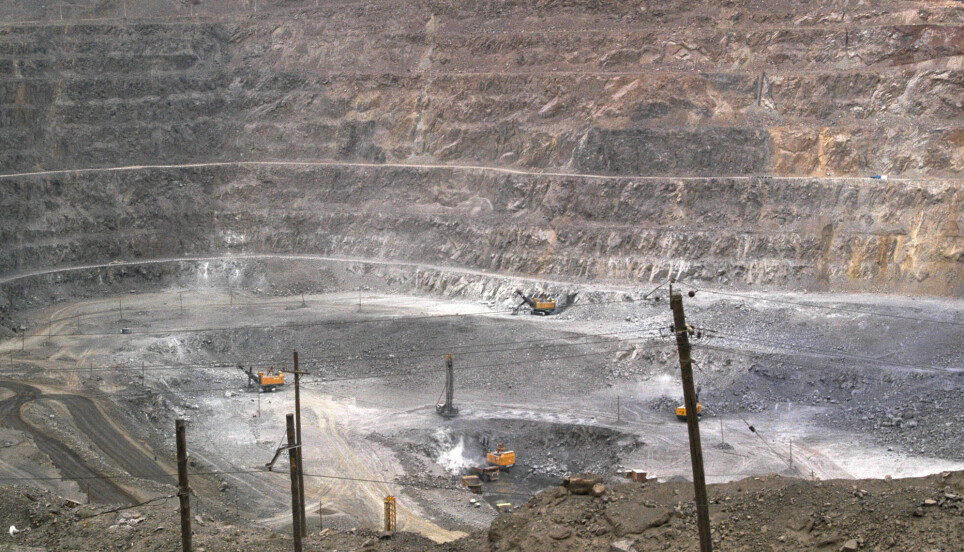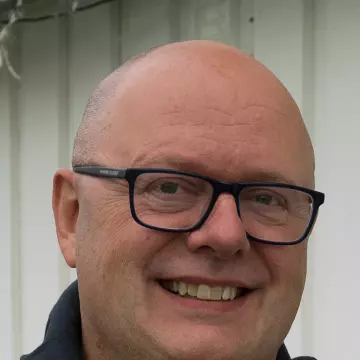
Rare earths: Norwegian fertilizer against a Chinese near-monopoly
Electric cars, mobile phones, wind turbines — modern technology needs metals that are almost exclusively found in China. Residues from Norwegian fertilizer production can help Europe become less dependent on a country that wants to produce more itself.
“The rare earths are extremely critical in many high-tech products,” says Arne Petter Ratvik, a senior researcher at SINTEF, Scandinavia’s largest independent research institute. Ratvik is coordinating a project designed to help Europe develop its own sources for these metals.
Magnets

The metals that fall under the collective term 'rare earths' — sometimes abbreviated REE — are needed for electric car batteries, among other things. They are also used in computer equipment, wind turbines, televisions, laser equipment and military materials, to name just a few other applications.
More than 80 per cent of these metals come from mines in China. The proportion is even higher for some rare earths. For example, more than 90 per cent of the EU’s permanent magnets are imported from China. These permanent magnets are the core of the machinery that allows wind turbines to generate electricity and electric cars to move.
Dependent on China
“Europe is a world leader in producing electric motors, but the industry is almost entirely dependent on importing permanent magnets made from rare earths from China,” the European Raw Materials Alliance (ERMA) wrote in a September press release. The press release described the critical need for these materials to support the EU’s ambitious European Green Deal, under which the EU would become climate neutral by 2050.
Ratvik says that China's goal, however, is to make more finished products in its own country instead of exporting raw materials.
Rare earths have also been used as weapons in international trade wars.
“China knows how to use this market power. The country's leaders have previously introduced export restrictions, to the great despair of other industrial nations,” Bjørn Arild Thon, CEO of the Norwegian electronics return company Renas, wrote on the company's website (in Norwegian).
Pilot in Porsgrunn
The residues from Yara's fertilizer production will make Europe a little better equipped for the future. The Norwegian company Reetec already operates a pilot plant next to the Yara factory on Herøya, in the Telemark region, which is designed to extract these metals.
“Large-scale fertilizer production elsewhere in the world relies on a different process. Yara, on the hand, uses a process that allows the rare earths to stay with the fertilizer until the end of the process. That makes it possible to add an extra step in the fertilizer process to extract the rare earths,” Ratvik said to sciencenorway.no.
A supplement
The project he is working on, Secreets, primarily deals with three metals used in magnets: Neodymium, praseodymium and dysprosium. These are the three substances that enabled Tesla to produce far lighter permanent magnets than was previously possible.
Ratvik can’t describe the details of how it’s done, of course: The industry, after all, has to keep its secrets. However, he warns that it’s important not to be overly optimistic.
“This will be a supplement. There are not so many rare earths in fertilizer that it will take over the market. As long as the need for these materials grows, there will also be a limit to how much we can get from recycling,” he says.
The Fen Complex
The Telemark region is not only home to research on extracting rare earth metals from fertilizer production, but also hosts perhaps the largest occurrence of rare earths in all of Europe, in the Fen Complex in Ulefoss, southwest of Oslo.
“We know that mining in Norway is always controversial,” Ratvik said, and described how an application to do more research on the Fen Complex had been rejected.
The Chinese extraction of rare earths has led to major environmental and health problems in the areas around the mines, according to reports in the Los Angeles Times and other media.
Translated by Nancy Bazilchuk
References:
Arne Petter Ratvik: Sjeldne jordarter – fra gjødselproduksjon til supersterke magneter (Rare earths — from fertilizer production to super strong magnets, Norwegian only). Presentation at Industry Week in Grenland, 2020.
Martin Watson et.al.: Designing Differentiated Approaches To Community Outreach And Social Acceptance: Lessons From The H2020 Secreets Project. 3rd Conference on European Rare Resources, 2020.
Bradley S. Van Gosen et.al.: The Rare-Earth Elements: Vital to Modern Technologies and Lifestyles. USGS Mineral Resources Program, 2014.
———































